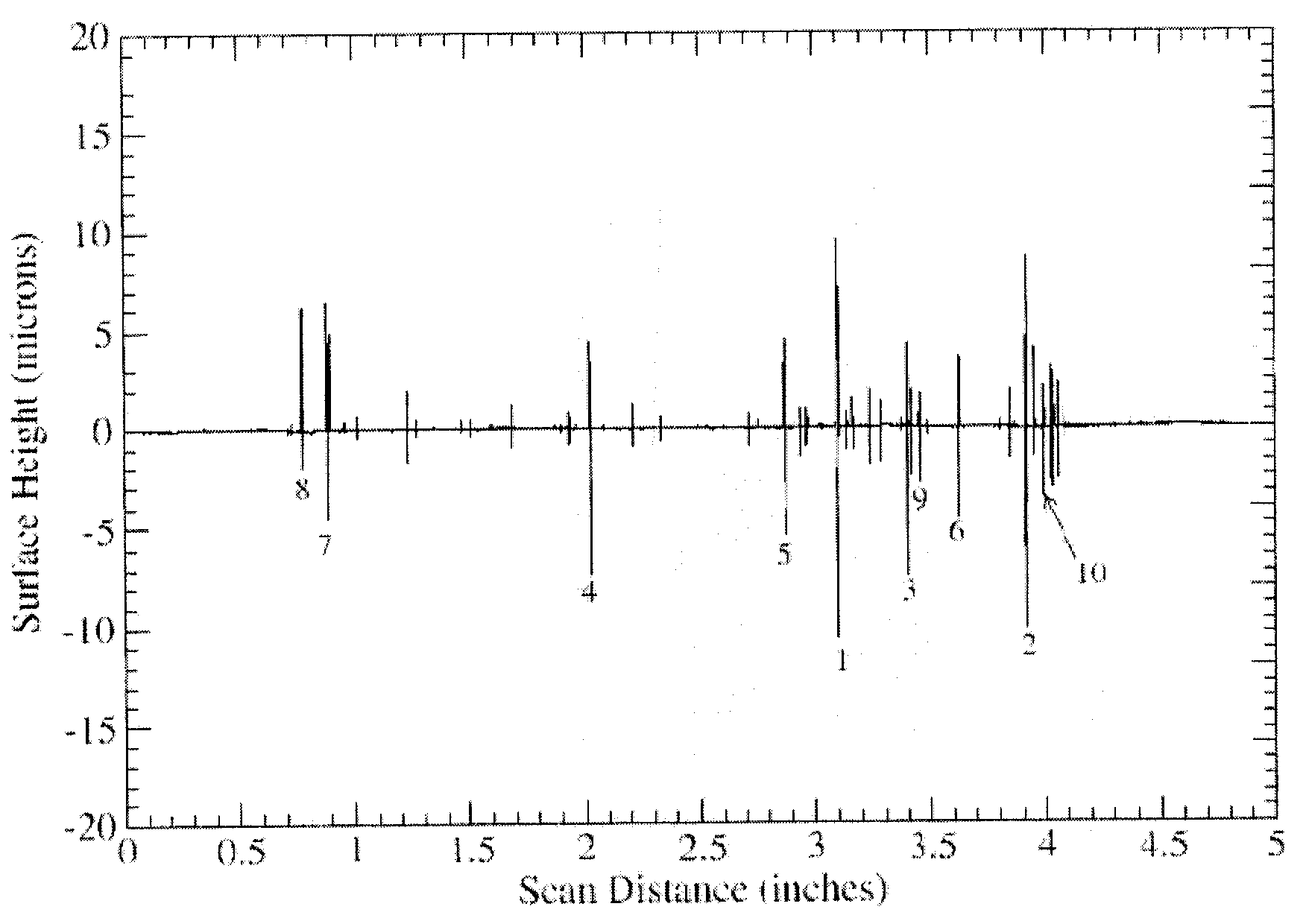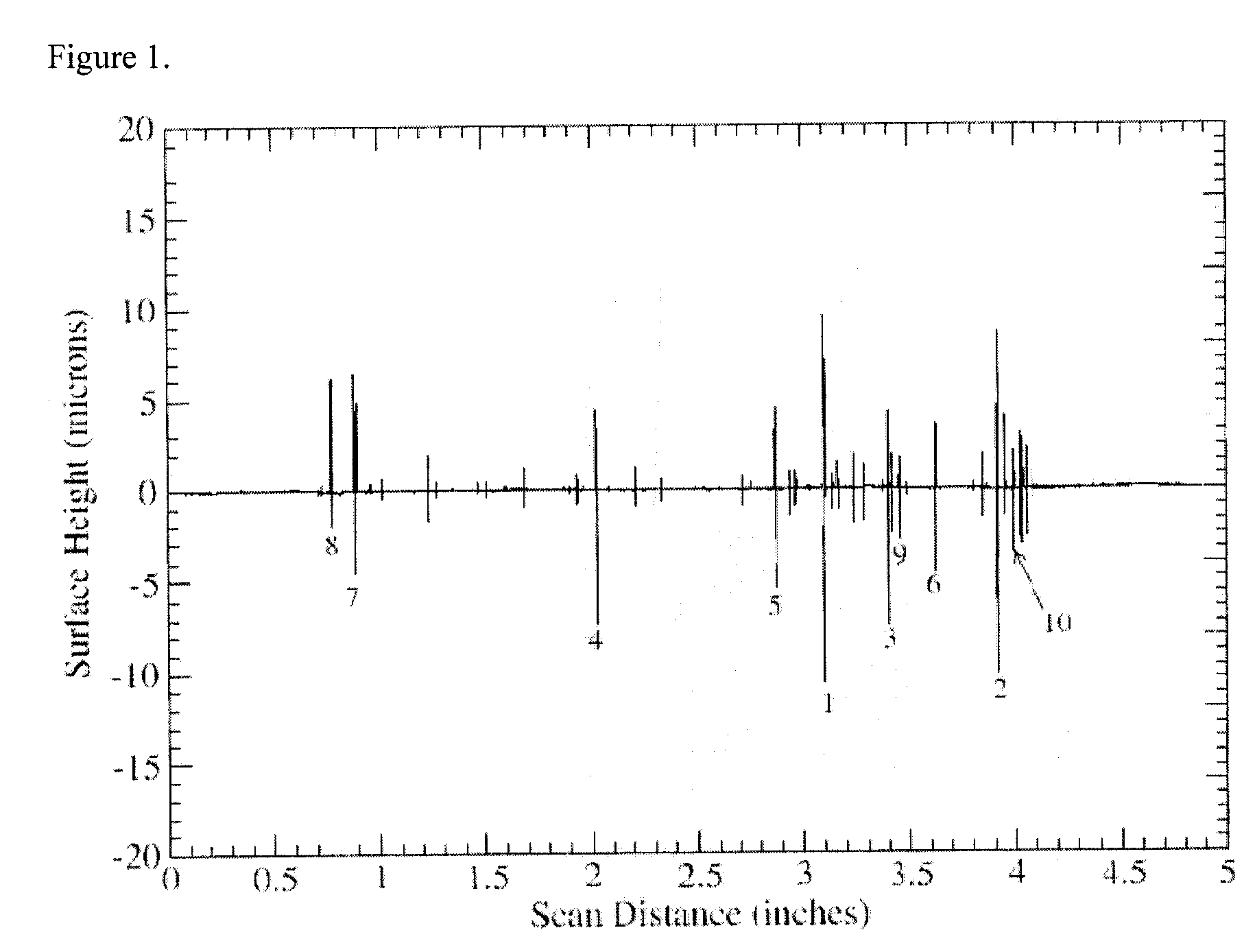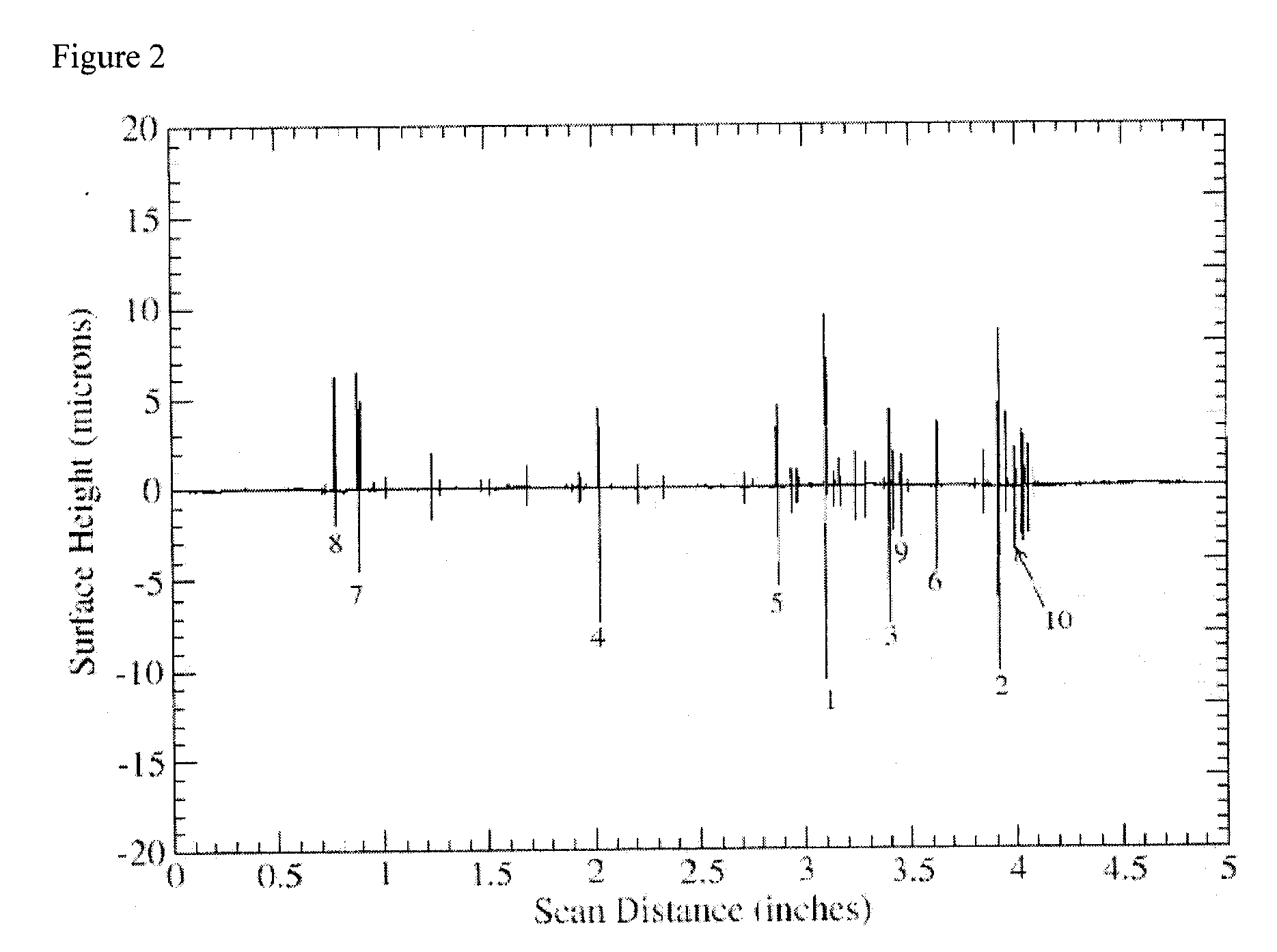Method for counting and characterizing aggressive diamonds in cmp diamond conditioner discs
- Summary
- Abstract
- Description
- Claims
- Application Information
AI Technical Summary
Benefits of technology
Problems solved by technology
Method used
Image
Examples
examples
[0054]The following examples further illustrate the invention but, of course, should not be construed as in any way limiting its scope.
[0055]Example 1. A polycarbonate sheet (GE Plastics XL10 Lexan™) having dimensions of 8×10″ by 3 / 32″ thick was placed on a ⅜″ thick glass plate with a flat, clean surface and onto which constraints had been attached to prevent the horizontal and vertical motion of the sheet. The constraining devices consisted of strips of polycarbonate with at least one straight edge, rectangular aluminum blocks, and metal rulers, all of which were attached to the glass plate with double sided tape.
[0056]A used 4.25″ diameter Mitsubishi Materials Corporation Triple Ring Dot (MMC TRD) diamond conditioner disc with a total of approximately 202,000 visible 200 grit diamonds on the working surface was placed diamond face down with its leading edge just touching the closer side of the indelible felt tip maker band and with one edge just touching the left-hand constraint o...
PUM
 Login to View More
Login to View More Abstract
Description
Claims
Application Information
 Login to View More
Login to View More - R&D
- Intellectual Property
- Life Sciences
- Materials
- Tech Scout
- Unparalleled Data Quality
- Higher Quality Content
- 60% Fewer Hallucinations
Browse by: Latest US Patents, China's latest patents, Technical Efficacy Thesaurus, Application Domain, Technology Topic, Popular Technical Reports.
© 2025 PatSnap. All rights reserved.Legal|Privacy policy|Modern Slavery Act Transparency Statement|Sitemap|About US| Contact US: help@patsnap.com



